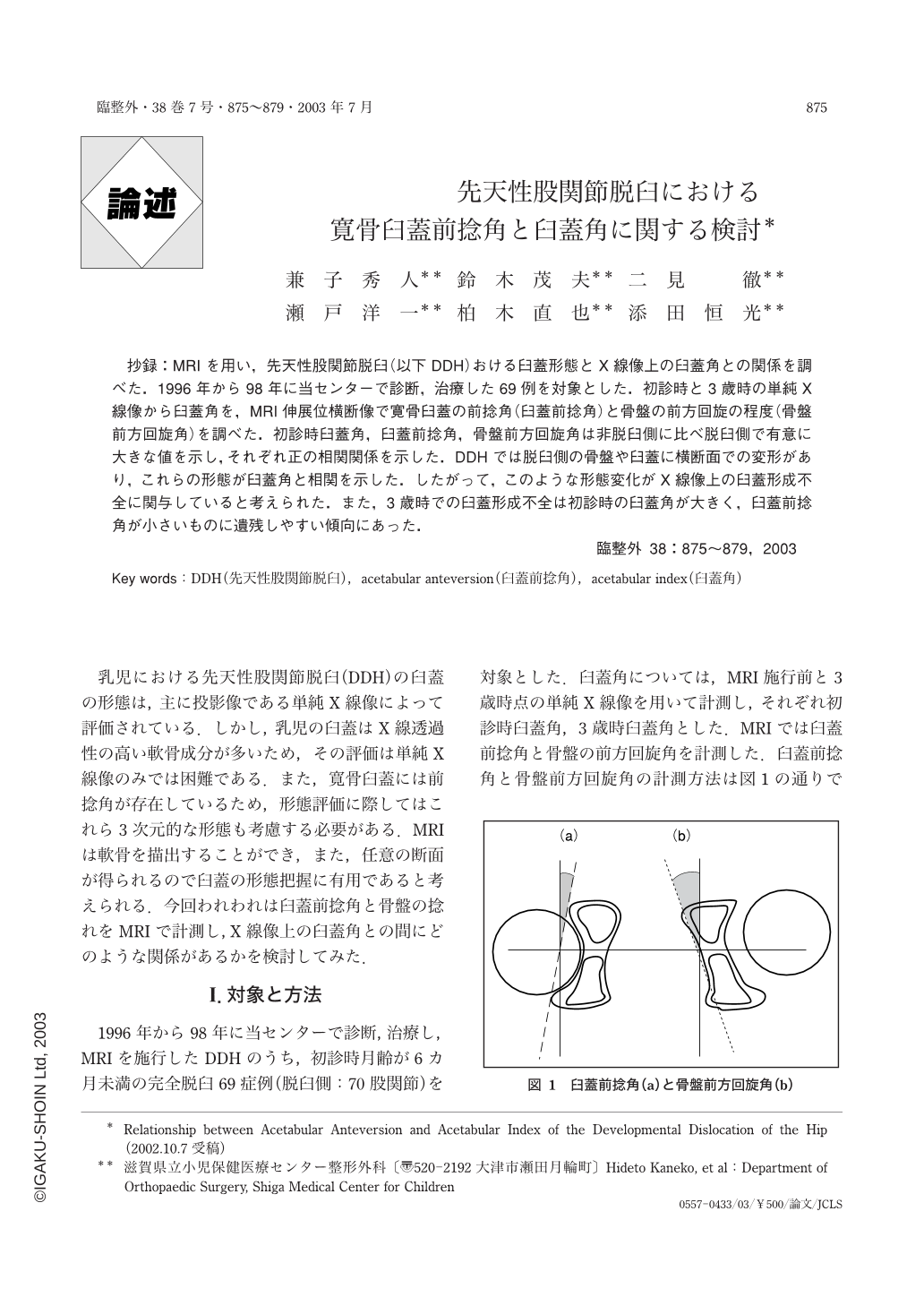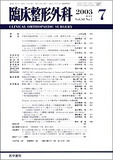Japanese
English
- 有料閲覧
- Abstract 文献概要
- 1ページ目 Look Inside
抄録:MRIを用い,先天性股関節脱臼(以下DDH)おける臼蓋形態とX線像上の臼蓋角との関係を調べた.1996年から98年に当センターで診断,治療した69例を対象とした.初診時と3歳時の単純X線像から臼蓋角を,MRI伸展位横断像で寛骨臼蓋の前捻角(臼蓋前捻角)と骨盤の前方回旋の程度(骨盤前方回旋角)を調べた.初診時臼蓋角,臼蓋前捻角,骨盤前方回旋角は非脱臼側に比べ脱臼側で有意に大きな値を示し,それぞれ正の相関関係を示した.DDHでは脱臼側の骨盤や臼蓋に横断面での変形があり,これらの形態が臼蓋角と相関を示した.したがって,このような形態変化がX線像上の臼蓋形成不全に関与していると考えられた.また,3歳時での臼蓋形成不全は初診時の臼蓋角が大きく,臼蓋前捻角が小さいものに遺残しやすい傾向にあった.
We evaluated the relationship between acetabular anteversion and acetabular index in 69 cases of developmental dysplasia of the hip (DDH;70 dislocated hips). Radiographic acetabular index was calculated at 3months of age (mean, 3.6 months) and again at 3 years of age (mean, 3.0 years). Magnetic resonance imaging was performed, and acetabular anteversion and pelvic rotation angle were determined from measurements of the transverse planes made with the hips in extension. Acetabular index, acetabular anteversion, and pelvic rotation angle in dislocated hips were all significantly greater than those in non-dislocated hips, and there were positive correlations between these angles. Patients with acetabular dysplasia at 3 years of age tended to have had greater acetabular index and smaller acetabular anteversion at 3 months of age however, there was no significant difference in acetabular index between dislocated and non-dislocated hips when measured at 3 years old.
Our results demonstrated that as pelvic rotation angle increased, acetabular anteversion increased as well, while greater acetabular anteversion is associated with greater radiographic acetabular index. They also suggest the possibility that acetabular position (such as anteversion) may influence radiographic acetabular index. Thus, if the acetabular anteversion decreases after concentric reduction, radiographic acetabular index may also reduce. As a result, hips that have a large amount of acetabular anteversion may have greater potential for normalization of radiographic acetabular index. Further, hips that have radiographic acetabular dysplasia with small acetabular anteversion may have greater risk for residual acetabular dysplasia at 3 years of age.

Copyright © 2003, Igaku-Shoin Ltd. All rights reserved.


